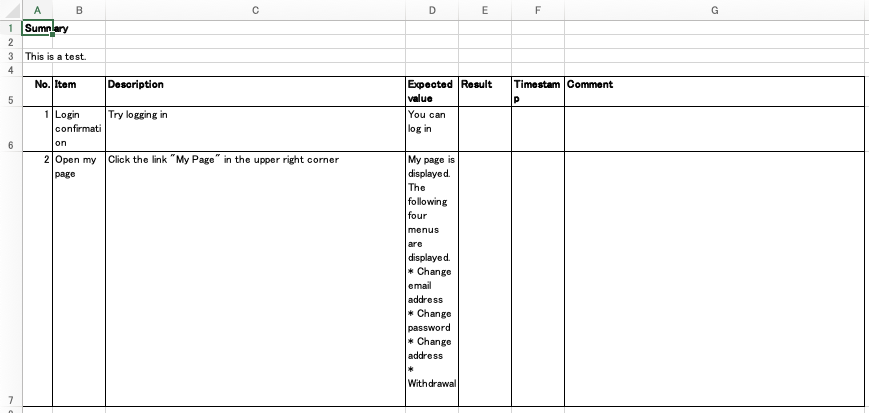Table of Contents
Let’s think about Euler’s formula in polyhedron.
Euler’s Formula
On polyhedron, the following equation is valid.
(vertex count) – (edge count) + (face count) = 2
This formula is also true to plane figure.
Now, let’s think about this formula on plane figure. Polyhedron can be projected to plane figure, so it is true to polyhedron when it’s true to plane figure.
menProject Polyhedron to Plane Figure
Polyhedron can be projected to plane figure.
Left is a tetrahedron, and it can be projected to plane figure on the right side. 4 faces of tetrahedron becomes 3 triangle and other, rounding area. Plane is divided into 4 area by vertex and edge.
Proof
Now, think about plain figure composed vertex, edge and face. Vertex is edge’s start and end point. All edge is connected only at vertex, don’t cross.
Think in mathematical induction. Define \( V \) as vertex count , \( E \) as edge count , \( F \) as face count. The goal is \( V – E + F = 2 \) .
Case \( E = 1 \)
Edge \( E \) is 1, face \( F \) is 1, Veftex \( V \) is 2, then
\[ V – E + F = 2 – 1 + 1 = 2 . \]The formula is true.
Case when \( E = k \in \mathbb{N} \)
Suppose \( E_k \) , \( V_k \) , \( F_k \) as \( E \) , \( V \) , \( F \) when \( E = k \) and the formula is true.
\[ V_k – E_k + F_k = 2 \]\( V_k \) and \( F_k \) is not unique for \( k \), they are values which meet the formula.
Think of adding a new edge. Edges are connected on vertexes, so new edge should be connected to already existing edges on start or end point
When the new edge connect on one point
Vertex count increases by one then \( V = V_k + 1 \). Edge count increases by one then \( E = E_k + 1 \) . Face count doesn’t change so \( F = F_k \) .
\begin{array}{cl} & V – E + F \\ = & ( V_k + 1 ) – ( E_k + 1 ) + F_k \\ = & V_k – E_k + F_k \\ = & 2 \end{array}When the new edge connect on two point
Without the new edge, edges are connected so one side or the other is rounded by edges. Then, draw the new edge, and the face count increases by one.
Now, vertex count doesn’t change, \( V = V_k \), edge count increases by one, \( E = E_k + 1 \) , face count increases by one, \( F = F_k + 1 \) . Of course, in the case that start and end point is the same.
\begin{array}{cl} & V – E + F \\ = & V_k – ( E_k + 1 ) + ( F_k + 1 ) \\ = & V_k – E_k + F_k \\ = & 2 \end{array}From the above, when the formula is true to \( E = k \in \mathbb {N} \), it is also true to \( E = k + 1 \) .
Above all, the formula is always true.
With this Euler’s Formula, we can prove Descartes theorem. I wrote the detail on Prove Descartes Theorem on Polyhedron.









